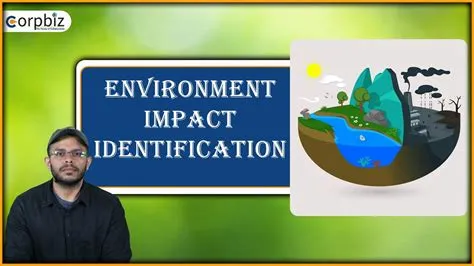Hey there, business owners and design enthusiasts! Ever stopped to think about your humble business ID card? It’s more than just a piece of plastic; it’s a mini-billboard, a symbol of your brand, and a crucial tool for security and access. But in a world increasingly focused on sustainability, we need to ask ourselves: what about the environmental impact of those little cards? This article dives into the latest innovative trends in business ID card design, focusing on how we can create stunning cards while minimizing our environmental impact.
Let’s face it, we’ve all seen those generic, boring ID cards. They’re forgettable, lack personality, and frankly, a bit depressing. But times are changing! Modern ID card design is exploding with creativity. We’re seeing stunning uses of color, texture, and even interactive elements. Think sleek minimalist designs that shout sophistication, or bold, vibrant styles that perfectly capture your brand’s energy. But what if we could combine this exciting creativity with a commitment to the planet?
The Rise of Eco-Friendly ID Cards:
The good news is, the demand for eco-friendly ID cards is growing fast. More and more businesses are realizing that sustainability isn’t just a trend; it’s smart business. Consumers are increasingly conscious of environmental issues, and they’re rewarding companies that share their values. So, how can you create stunning ID cards and be kind to the planet?
First, let’s talk materials. Traditional PVC plastic is a major culprit in ID card environmental impact. It’s non-biodegradable and contributes to plastic pollution. But there are fantastic alternatives! Think about choosing recycled materials, like rPET (recycled polyethylene terephthalate), which is derived from recycled plastic bottles. Or consider plant-based materials like those made from corn starch or other renewable resources. These alternatives are not only environmentally friendly but also surprisingly durable and visually appealing. Check out more eco-friendly options on our blog about eco-friendly ID card materials.
Beyond the Material: Sustainable Practices:
But sustainable ID card design goes beyond just the materials. Let’s consider the entire production process. Look for printers who utilize eco-friendly printing techniques, such as soy-based inks or vegetable-based varnishes. These options reduce the use of harsh chemicals and minimize your carbon footprint. And don’t forget about responsible waste management. Partner with printers committed to recycling and reducing waste throughout the production lifecycle.
Integrating Technology for a Greener Future:
Technology is playing a huge role in making ID cards more sustainable. The move towards technology-integrated ID cards opens up a world of possibilities. Digital ID cards, for example, eliminate the need for physical cards altogether. Think about the reduced waste, the energy savings in production and shipping, and the convenience for your employees. This approach aligns with the broader movement toward digitalization and paperless processes, contributing to a smaller environmental footprint. Learn more about digital ID trends and explore how you can incorporate them into your business.
Design Trends that Make a Statement:
Now, let’s talk design! Sustainability doesn’t mean sacrificing style. In fact, many of the most striking ID card designs are also the most eco-conscious. Think minimalist designs that rely on clean lines and impactful typography. These designs often require less ink and fewer materials, leading to a smaller environmental impact. Consider incorporating natural textures and earthy tones to reflect your commitment to sustainability. Or, why not highlight your company’s commitment to the environment with imagery of nature or sustainability-focused logos?
Customisation and Personalisation:
Don’t forget the power of customization and personalization! A well-designed ID card is an extension of your brand. It’s a great opportunity to showcase your company’s values and make a positive impression. Make your ID cards reflect your commitment to sustainability. This could be through incorporating eco-friendly messaging or using sustainable materials. It could also involve using a company-specific colour palette that reflects your brand’s commitment to environmentalism. Your ID cards can be a powerful symbol of your brand.
Industry-Specific Considerations:
The ideal design will vary depending on your specific industry. For example, a construction company might prioritize durability and water resistance, while a tech startup might focus on modern aesthetics and digital integration. This is where industry-specific ID card designs and design trends come into play. Remember to consider the functional aspects of your cards and find eco-friendly solutions to meet those needs. Explore the intricacies of functional features in ID design to find what best suits your business.
The Bigger Picture: Branding and Sustainability:
Think of your ID cards as more than just identification; they’re a powerful branding tool. By choosing sustainable materials and designs, you’re not just reducing your environmental impact; you’re also enhancing your brand image. Consumers are increasingly drawn to companies that demonstrate a commitment to sustainability, and your ID cards can be a key part of that message. Learn how corporate branding with ID cards can highlight your company’s sustainability efforts. It’s a win-win: you reduce your environmental footprint and boost your brand reputation at the same time!
Conclusion:
Designing sustainable business ID cards is no longer a niche trend; it’s a necessity. We’ve seen how innovation in materials, printing techniques, and technology is allowing businesses to create stunning, eco-friendly ID cards. By making conscious choices about materials, production processes, and design, you can minimize your environmental impact without compromising on style or functionality. Remember, your ID cards are a reflection of your values, and a commitment to sustainability is a value that resonates deeply with today’s consumers. Choose wisely, design thoughtfully, and make a positive impact – one ID card at a time.
Frequently Asked Questions
- What are the most environmentally friendly materials for ID cards? Recycled materials like rPET (recycled polyethylene terephthalate) and plant-based materials like corn starch are excellent eco-friendly options. There are many other sustainable alternatives available, so research your options to find the best fit for your needs.
- How can I find a printer that uses sustainable printing techniques? Look for printers that utilize soy-based inks, vegetable-based varnishes, and have a commitment to recycling and waste reduction. Ask potential printers about their sustainability practices and certifications.
- Are digital ID cards a truly sustainable option? Yes, digital ID cards significantly reduce waste and energy consumption associated with producing and shipping physical cards, making them a highly sustainable alternative.
- How can I incorporate sustainable design elements into my ID cards? Embrace minimalist designs, use earthy tones and natural textures, and consider incorporating imagery or messaging that reflects your commitment to the environment.
- What is the overall cost difference between traditional and sustainable ID cards? The cost difference varies depending on the specific materials and printing techniques used. While initially, sustainable options may seem slightly more expensive, the long-term benefits for the environment and your brand reputation often outweigh the initial cost difference.

